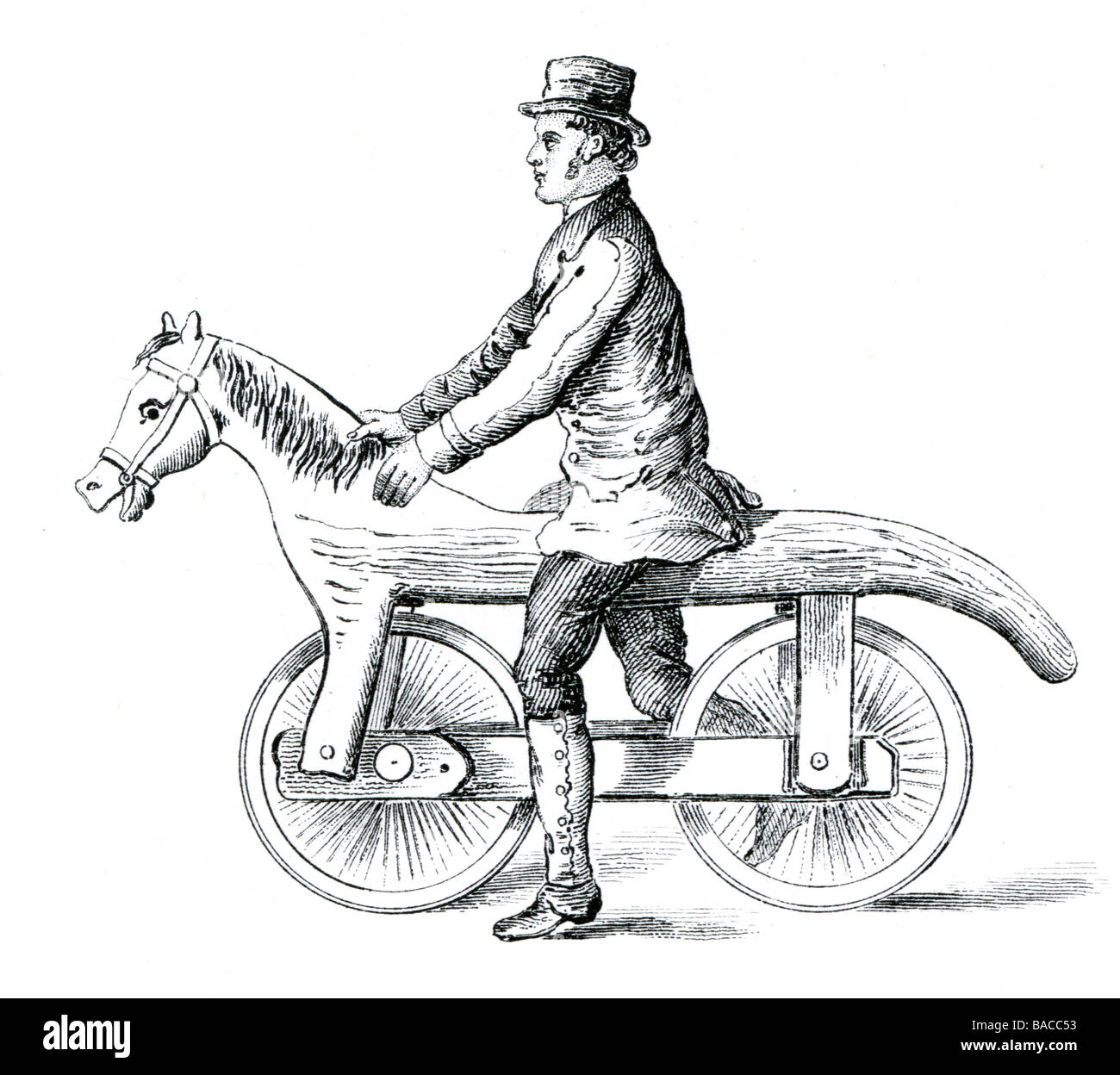the dandy horse running machine bike bicycle velocipede draisine transport two-wheeler vehicle

Image details
Contributor:
19th era 2 / Alamy Stock PhotoImage ID:
BACC53File size:
55.8 MB (1.6 MB Compressed download)Releases:
Model - no | Property - noDo I need a release?Dimensions:
4677 x 4168 px | 39.6 x 35.3 cm | 15.6 x 13.9 inches | 300dpiMore information:
The dandy horse, "running machine", velocipede, or draisine, was invented by Baron Karl von Drais in Mannheim, Germany, patented in January 1818. Being the first means of transport to make use of the two-wheeler principle, the Laufmaschine is regarded as the forerunner of the bicycle. The dandy-horse was a two-wheeled vehicle, with both wheels in-line, propelled by the rider pushing along the ground with the feet as in regular walking or running. The front wheel and handlebar assembly was pivoted to allow steering. Several manufacturers in France and England made their own dandy-horses during its brief popularity in the summer of 1819 -- most notably, Denis Johnson of London, who used an elegantly curved wooden frame which allowed the use of larger wheels. Riders preferred to operate their vehicles on the smooth pavements instead of the rough roads, but their interactions with pedestrians caused many municipalities to enact laws prohibiting their use. A further drawback of this device was that it had to be made to measure, manufactured to conform with the height and the stride of its rider, as none of its manufacturers are known to have built an adjustable version. After its brief moment in the limelight, the dandy-horse quickly faded into oblivion. However, in the 1860s in France, the vélocipède bicycle was created by attaching rotary cranks and pedals to the front-wheel hub of a dandy-horse.